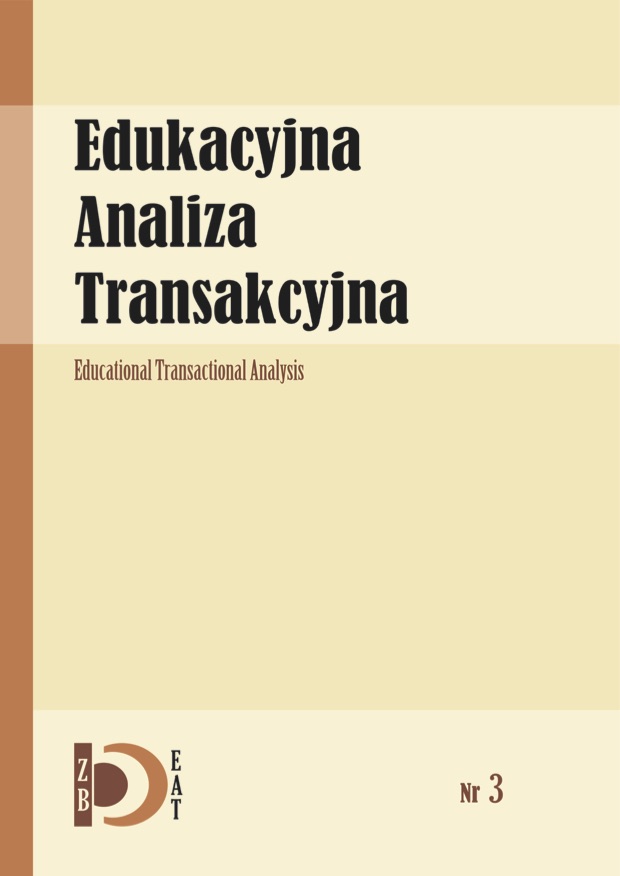Zastosowanie map myśli w procesie dydaktycznym
Mindmapping a weryfikacja efektów kształcenia z zakresu edukacyjnej analizy transakcyjnej
- Autor
-
-
- Słowa kluczowe:
- mapy myśli, analiza transakcyjna, nauczanie
- Abstrakt
-
This article attempts to show how the Mind Mapping method can be used in teaching and assessing the effects of education. A mind map is a multifunctional tool that could aid the educational process on many levels. Its formation allows for greater creativity and multidirectional thinking, which has a positive effect on the rate of learning and remembering information. It can also be-come an innovative way of enhancing teacher’s preparation for lessons and their actual conducting, which helps to pass the knowledge to students in an attractive form. It may also be a methodof verifying the student’s knowledge, which really streamlines the process of assessment. Insteadof reading long essays, the teacher can have an insight into students’ knowledge and skills ata glance. Four mind maps are presented in the article as examples; the maps were created by students taking an exam in educational transactional analysis. They clearly indicate that a teacher, looking at only one page, which does not take up a lot of time, can analyse the students’ way ofthinking as well as identify the areas sufficiently mastered by them and the areas in which they need some improvement.
- Pobrania
-
Statystyki pobrań niedostępne.
- Biogram autora
- Pobrania
- Opublikowane
- 18.12.2014
- Numer
- Nr 3 (2014)
- Dział
- Do wykorzystania w praktyce
- Licencja
-
OŚWIADCZENIE AUTORA:
Mam świadomość, że czasopismo jest wydawane na licencji Creative Commons - Uznanie autorstwa (https://creativecommons.org/licenses/by/4.0/legalcode).
Przesyłając artykuł wyrażam zgodę na jego udostępnienie na tej licencji
Jak cytować
Podobne artykuły
- Dagmara Szymańska, Wpływ Embrace Therapy® w ujęciu analizy transakcyjnej na domknięcie potrzeb („głasków”) wewnętrznego dziecka, zmianę perspektywy oceny sytuacji i uwolnienie trudnych emocji , Edukacyjna Analiza Transakcyjna: Nr 12 (2023)
- Bożena Wieczorek, System automatycznej oceny jako narzędzie wspierające nauczanie programowania w Akademickim Liceum Ogólnokształcącym SUT , Edukacyjna Analiza Transakcyjna: Nr 11 (2022)
- Dorota Pankowska, dr hab., Analiza transakcyjna w edukacji czy edukacyjna analiza transakcyjna? , Edukacyjna Analiza Transakcyjna: Nr 1 (2012)
- Anna Pierzchała, dr, Edukacyjna analiza transakcyjna a inne nurty pedagogiczne wyrosłe na gruncie koncepcji psychoterapeutycznych , Edukacyjna Analiza Transakcyjna: Nr 1 (2012)
- Jarosław Jagieła, dr hab.prof. AJD, [rec.] Stewart, I., Joines, V. (2016). Analiza transakcyjna dzisiaj , Edukacyjna Analiza Transakcyjna: Nr 5 (2016)
- Wiga Bednarkowa, dr hab. prof. AJD, [rec.] J. Jagieła, A. Sarnat-Ciastko, Dlaczego analiza transakcyjna? Rozmowy o zastosowaniu analizy transakcyjnej w pracy nauczyciela i wychowawcy , Edukacyjna Analiza Transakcyjna: Nr 4 (2015)
- Jarosław Jagieła, Psychopedagogika sensu i wartości, czyli o związkach terapii egzystencjalnej z analizą transakcyjną. (cz. 6) , Edukacyjna Analiza Transakcyjna: Nr 10 (2021)
- Zbigniew Wieczorek, dr, „Lustereczko, powiedz przecie...”, czyli analiza transakcyjna i neurony lustrzane , Edukacyjna Analiza Transakcyjna: Nr 1 (2012)
- Adrianna Ciastko, dr, Edukacyjna analiza transakcyjna na XXI Konferencji PTDE , Edukacyjna Analiza Transakcyjna: Nr 4 (2015)
- Małgorzata Lubojańska, mgr, Czy analiza transakcyjna może stać się pomocnym „narzędziem” w pracy nauczyciela? , Edukacyjna Analiza Transakcyjna: Nr 2 (2013)
Możesz również Rozpocznij zaawansowane wyszukiwanie podobieństw dla tego artykułu.
Inne teksty tego samego autora
- Dorota Gębuś, dr, Jarosław Jagieła, dr hab.prof. AJD, Nadanie imienia – początek biografii a skrypt , Edukacyjna Analiza Transakcyjna: Nr 5 (2016)
- Dorota Gębuś, dr, Nakazy i zakazy rodzicielskie a kreatywność jednostki. Źródła inhibitorów twórczości w perspektywie analizy transakcyjnej , Edukacyjna Analiza Transakcyjna: Nr 5 (2016)

